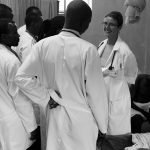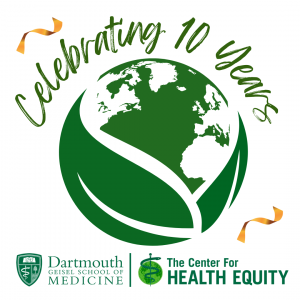Medical training combines self-directed learning, lectures, case discussions and practical experience. Medical school curricula and residency training in the United States have evolved in recent years to this preferred model. It is recognized that medical students and residents gain some of their most important knowledge and skills interacting with patients and modeling experienced doctors at work.
Currently in Rwanda, a more traditional textbook-and-lectures approach prevails. Bedside rounding on patients has been focused more on carrying out patient care activities and less on training the myriad learners who are at the bedside. Recognizing that this model leads to less qualified and capable doctors, the Rwandan Ministry of Health made bedside teaching one of the main mandates of HRH program.

To achieve this goal, the visiting HRH program doctors are working to build an appreciation among their local faculty colleagues of the importance of hands-on teaching. The best way to do so is by example, which is why doctors like Lisa V. Adams, MD, attends daily ward rounds with residents and medical students. On a ward with 12 patients, of which half are HIV+ and a third have co-disease of TB, she facilitates the kind of discussions that lead to insights and understanding among the students and residents that simply cannot be achieved through classroom lectures and Powerpoint presentations.
Recognizing that medical learning happens most effectively in the context of patient care, the daily rounds of the wards in Kigali have become essential teaching opportunities where learners at all levels can be actively engaged.

